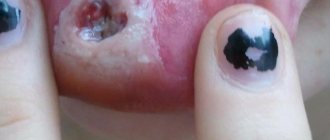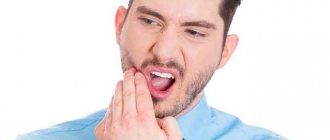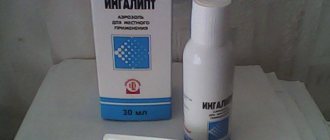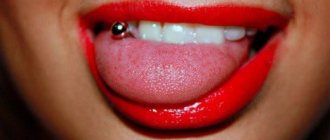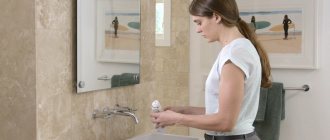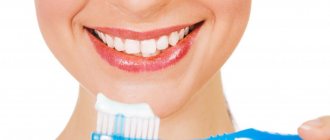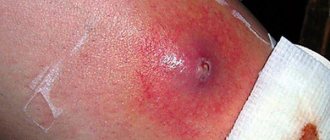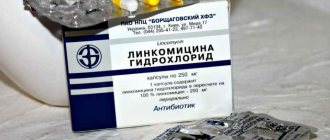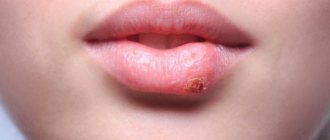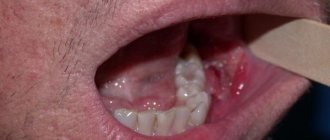What are the stages of development of coronavirus disease?
There are 4 periods of the infectious process:
- Incubation, this means that some time passes from the moment of contact with a person who is an excretor to the first symptoms - from 2 to 14 days. It is important to monitor your condition.
- Flu-like, then the temperature may rise, aches, muscle pain, throat pain, loss of smell and taste may appear. Nausea and vomiting may occur. Do I need to do x-rays and computed tomography? This is also useless because in the vast majority of cases we don't see anything on CT yet. A person may do this research, think that everything is fine, but in fact everything has just begun, so there is no need to do such research.
- Experts call it the “high period”, the symptoms become especially pronounced, shortness of breath, cough, and temperature above 38 are added. This is the high period when there is a need for hospitalization, and here all the studies will be informative.
- Convalescence, that is, when the disease has passed, the period of recovery, this period lasts quite a long time, from 14 days to 3-6 months, recovery occurs.
Advice from a doctor of medical sciences
Raushan Karabaeva warns that self-use of potent drugs can cause serious side effects. Vitamin supplements can also be harmful to health.
For a mild form of coronavirus infection, you must:
- drinking plenty of small amounts;
- vitamins C and D;
- balanced diet;
- at fever - paracetamol and ibuprofen.
In other cases, consultation with a doctor is necessary.
If you test positive for coronavirus, how to treat mild cases at home in adults and children after consulting with your doctor.
What to do if you have been diagnosed with coronavirus, how to treat it at home, what medications to take? Reviews from those treated at home, symptoms in adults and children.
Is it possible to treat lungs at home?
Treating pulmonary diseases, especially on your own at home, is a rather difficult task. The main problem is that there are no nerve endings in the lungs. This means they don't hurt. Therefore, additional symptoms are reported about problems with the lungs - most often cough and pain under the shoulder blades. Therefore, in some cases it is so easy to miss them and, accordingly, choose the wrong therapy.
The most common lung diseases are:
pneumonia (pneumonia),- tuberculosis,
- pleurisy,
- emphysema,
- pneumothorax,
- alveolitis,
- pulmonary edema.
Partially, lung problems can develop as complications of other diseases, partially due to exposure to bacteria and viruses, and also due to hypothermia. Ecology plays an important role. Poor air quality not only contributes to the development of lung diseases, but also prevents their full recovery.
Typically, pulmonary disease in its development goes through the following stages:
- Absence of cough or presence of dry cough. Often – with pain in the back and sternum.
- Sputum discharge, sometimes mixed with blood.
- Cough with sputum, but without pain.
- Recovery (subject to timely and correct treatment).
You can treat the lungs at home, but to do this, you first need to provide the patient with bed rest and warmth. Basic principles to follow when treating at home:
Maintaining bed rest.- Drink plenty of warm drinks.
- Take herbal infusions and decoctions strictly by the hour, including at night.
- Frequent change of underwear and bed linen, when first wet.
- At high temperatures, apply cooling lotions to the forehead.
- The most important thing throughout the illness is not to leave the patient unattended, especially if conditions such as suffocation or pulmonary edema develop.
When carrying out treatment at home, it is important to remember that in the initial and acute stages of any pulmonary disease, what usually helps with a sore throat is not effective, that is, sweating, breathing steam and gargling are useless. When treating the lungs, it is necessary to achieve sputum discharge. In this case, the lungs will be cleansed, the source of infection will be destroyed, and the recovery process will begin.
Signs of infection
What you should pay attention to, the main symptoms of coronavirus are highlighted in bold:
- general weakness;
- diarrhea;
- cough;
- headache;
- myalgia and body aches;
- sweating;
- sore throat;
- malaise;
- increase in body temperature up to 38°C;
- disturbance of taste and smell;
- ringing or noise in the ears.
Medical experts list among the external symptoms of coronavirus infection redness of the skin of the hands with unclear boundaries, as well as the lower third of the lower leg, feet with a bluish-purple tint; in some cases, the rash has the character of pink-reddish spots.
Symptoms of pneumonia do not appear immediately, usually no earlier than five to seven days, the so-called respiratory type. These symptoms can even be a simple cough, shortness of breath, discomfort, severe limitation of inhalation and chest pain.
If these symptoms do not progress and the fever does not persist or linger for more than 7 days, I think there is no need to worry. This is not a reason to start taking antibiotics or run out and get a CT scan.
If a person sees within 2-3 days after these symptoms appear that they intensify, that either a second fever appears, or an increase in temperature, or that the first one does not stop, this may be a sign of serious lung damage and requires examination and change treatment tactics, increasing some kind of therapy.
Ointments and gels
Topical agents have a good therapeutic effect. A cream, ointment or gel for gum inflammation provides local anesthesia, envelops the mucous membrane with a protective film, which prevents bleeding, pain, and increased inflammation. With their help you can get rid of itching, burning, swelling.
For gum diseases, ointments and gels must be applied to the inflamed surface at least 2-3 times a day, after rinsing the mouth with an antiseptic solution or herbal decoction. Let's look at the most popular and effective drugs.
"Metrogil denta"
Designed for the treatment of inflammatory processes. It has a pronounced anti-inflammatory and anesthetic effect, relieves itching and burning. Apply twice a day, first cleanse the oral cavity of food debris.
"Solcoseryl"
Available in gel and ointment form. The gel is indicated for open abrasions, wounds, ulcers, and the ointment for closed inflammatory processes. Promotes rapid regeneration of the mucous membrane and has an anesthetic effect. Apply 2-3 times a day.
"Dental"
It is effective thanks to the corn oil it contains, which envelops the inflamed surface with a protective film. Helps relieve pain and has healing properties. Apply with massaging movements 3-4 times a day.
"Holisal"
Instant action analgesic, antimicrobial, anti-inflammatory gel. Relief is felt a couple of minutes after application and lasts for several hours. Rub into the surface of the gums 2-3 times a day for 5-7 days.
"Asepta"
A drug with a pronounced antimicrobial, antipruritic, analgesic effect. The propolis included in its composition provides an antiseptic effect, helps restore damaged tissue, and prevents bleeding gums. It is used not only for treatment, but also for the prevention of inflammatory diseases of the oral cavity.
What adults should pay attention to
An increase in body temperature within 3-5 days is observed during the normal course of CVI, you must contact the emergency call center or clinic where you belong geographically, notifying about quarantine and indicating the reason for the call.
We especially want to focus attention on patients from the high-risk group, these are people over 65 years of age and people with underlying diseases of the cardiovascular, endocrine system, cancer, as well as people after organ transplantation, they should not self-medicate, they should immediately contact their local doctor .
If you receive a positive test result for the presence of COVID-19, you must:
- do not leave home, self-isolate while wearing a mask;
- carry out thermometry at least three times a day;
- observe all personal hygiene measures;
- use individual dishes;
- ventilate the room.
How are the symptoms of coronavirus different from colds and flu?
Let's look at the picture to see the similarities and differences between the signs of coronavirus, ARVI and influenza.
No need to lower the temperature to 37-38°C
In this case, the immune system reduces its effectiveness in fighting infection, Professor Nikiforov of the Medical and Biological Agency said in an interview, he noted that there is nothing extraordinary about coronavirus and recalled that at the initial stage they use the same methods as in the treatment of influenza and ARVI.
High temperature is a sign of infection and illness, but it is also a symptom that the body is fighting, so when the temperature reaches 38.3 - 38.5 ° C you do not need to do anything, because this is the optimal temperature for the immune system in conditions of aggression, and if it is already higher than these indicators, then something has gone wrong; here you can gradually reduce the temperature, but not to 36.6°C.
Other home recipes for treating worms
Pumpkin seeds
Healthy, but also tasty. When fighting worms, pumpkin seeds can be consumed in absolutely any form:
- raw;
- dried;
- fried;
- baked;
- in the form of decoction or tea;
- with added sugar or oils.
One of the most popular recipes is seeds with honey. Three hundred grams of peeled grains will be enough for one adult:
- The seeds need to be crushed. It is best to do this in a blender or coffee grinder.
- Dilute the resulting dry mixture with cool purified water until it becomes liquid sour cream.
- After this, add a spoonful of honey to taste.
- You need to eat the finished product on an empty stomach. It is advisable to extend the pleasure for an hour, no less.
- After just three hours, you can give an enema or drink a laxative to completely cleanse the body.
Garlic
In folk medicine, garlic for parasites is used in different ways - these can be preparations for both internal and external use.
Helminthiasis can be cured with a mixture of garlic and honey. To prepare it, you need to combine 150 peeled fresh garlic with half a liter of liquid honey, boil the mixture over low heat in a water bath for about 30 minutes, stirring constantly and removing the foam. Cool the mixture and drink 15 ml three times a day before meals.
To combat worms, you can use garlic juice. It is taken according to the following scheme: during the first 5 days - 10 drops, in the next 5 days the daily dose is doubled. Further, every 5 days the number of drops is increased by 10. Thus, the daily dose should reach 1 tablespoon.
You should wash down the garlic juice with an infusion of wormwood herb in an amount of 50 ml, and after another 30 minutes you should eat 1 tablespoon of honey. When the period of administration reaches three months, the number of drops is gradually reduced, bringing it to the original value.
Another garlic based remedy. Mix 1 teaspoon of garlic mass with 2 tablespoons of chopped thyme herb. The resulting mixture is poured with half a liter of silicon water, brought to a boil and cooked under the lid for 10 minutes. After which the broth is cooled at room temperature and drunk instead of water.
Cleansing enemas
There are several effective options for enemas against worms. The following recipes are considered the most popular:
- Microenema with garlic . Pour a few cloves of garlic into a glass of water and wait until the liquid boils. Garlic is removed from the resulting infusion - the enema liquid is ready. It is introduced into the anus using an enema and kept for as long as possible. Course – 14 days. Enema is contraindicated for children under three years of age.
- Garlic-onion enema . To prepare it, take garlic cloves and an onion and grind them into a paste. Pour in a quarter glass of hot water and strain. You can add a little lemon juice to the infusion.
- Tansy enema . A handful of tansy flowers are poured with a glass of boiling water. Infuse the liquid for several minutes. Flowers are removed using gauze. The resulting infusion is injected into the intestine and waited for the maximum possible amount of time. You cannot give an enema with tansy to children under 12 years of age.
- Soda enema . You will need half a teaspoon of baking soda and a glass of water. Mix everything and bring to a boil. The resulting liquid is cooled and injected orally. Keep for about half an hour. The course lasts seven days.
More home treatment options
What medications are best to take for coronavirus - recommendations from the head of the Center for Promoting Public Health of the National Center for Public Health of the Ministry of Health of the Republic of Kazakhstan, Zhazira Emberdieva:
- When the first symptoms appear, you need to drink plenty of fluids and stay in bed;
- Among antipyretic drugs, it is recommended to use paracetamol, ibufen, nimesulide;
- Antiviral drugs – ingavirin, Theraflu, Fervex;
- Anticoagulants - acetylsalicylic acid (aspirin), potassium preparations - according to indications;
- ACC 600, inhalations, herbal syrups (prospan), licorice root and other drugs help with cough;
- We recommend gargling with antiseptics, saline solutions, and taking vitamins C and D;
- Follow the pronation position - lie on your stomach for one hour 4-5 times a day to facilitate ventilation of the lungs and prevent shortness of breath, in addition, we recommend doing breathing exercises.
For mild to moderate cases of the disease, antibiotics are contraindicated . Let’s consider other popular treatment methods, as well as prices for medications. Medicines are taken in consultation with a doctor:
- CEF-3 for 14 days (one ampoule costs about 1,400 tenge, for 2 weeks it is 19,600 tenge);
- Antibiotic Sumamed - (2 packages of 5200 tenge, that’s 10,400);
- Thrombo ACC for blood thinning - 1400 tenge;
- Antiviral drug. For example, Ingavirin - about 5000 tenge.
According to this treatment plan, the total amount of drugs will be 36,400 tenge. This does not count the costs of the treatment room, where many are forced to seek medical care, and the drug “Hilak Forte” to balance the intestinal microflora.
Now we are considering another option, it is given in the recommendations of the head of the Center for Promoting Public Health of the National Center for Public Health (we take only medications).
Another variant:
- Paracetamol, Aspirin, Nimesulide tab. — to reduce temperature (1400 tenge);
- Ingavirin 90 mg 1 capsule per day, 5 days. (5000);
- Tamiflu 75 mg 2 times a day for 5 days (2300 tenge);
- ACC 600 mg 2 times a day for 5 days; (1300 tenge);
- Gargling with Furacilin solution 4-5 times a day (60 tenge).
We believe that this example is for a milder form of the disease; the total cost for such treatment will be 9860 tenge.
And one more method, also often practiced:
- Sumamed, 5 days, 2 packages −10,400 tenge;
- Antiviral drug - within 5,000 tenge;
- Hilak Forte - 2300 tenge.
The check will be issued in the amount of 17,700 tenge.
It turns out that in the simplest calculation a resident can spend from 10 to 36 thousand tenge on his treatment, provided that he is the only sick person in the family.
Amounts, treatment methods and recommendations are different, and if you have undergone treatment at home, share your experience with us in your reviews.
Methods for treating osteochondrosis at home
Drugs that could be used to restore damaged discs and vertebrae have not yet been synthesized. Therefore, therapy for osteochondrosis is aimed at preventing the progression of the disease. All methods used in treatment are based on accelerating blood circulation and replenishing nutrient reserves in cartilage and bone tissues.
Wearing orthopedic devices can improve the patient’s well-being. For cervical pathology, Shants collars are used; for thoracic and lumbar osteochondrosis, soft bandages with a warming effect or elastic corsets with hard inserts made of plastic or metal are used.
Shants collar.
Drug therapy
The first choice drugs in the symptomatic treatment of osteochondrosis are nonsteroidal anti-inflammatory drugs (NSAIDs). Acute pain can be relieved by intramuscular injection of solutions Ortofen, Xefocam, Movalis.
If the pain syndrome is mild, you can get rid of it by taking pills. These are Ketorol, Nise, Ibuprofen, Diclofenac, Etoricoxib.
Mild discomfort is eliminated by local application of gels and ointments - Voltaren, Fastum, Artrosilen, Nimesulide, Finalgel.
| Drugs used in the treatment of osteochondrosis | Names of medicines | Therapeutic effect |
| Glucocorticosteroids | Diprospan, Kenalog, Flosterone, Dexamethasone, Methylprednisolone | Stop inflammatory processes, have analgesic, antiexudative, immunosuppressive effects |
| Muscle relaxants | Baclofen, Baklosan, Mydocalm, Sirdalud, Tizanidine | Relaxes skeletal muscles, eliminates compression of spinal roots and blood vessels by muscle spasms |
| Chondroprotectors | Artra, Structum, Teraflex, Alflutop, Dona | Partially restores the cartilage tissue of the intervertebral discs, exhibits anti-inflammatory and analgesic activity |
| Warming ointments | Viprosal, Capsicam, Finalgon, Apizartron, Nayatox | Irritate subcutaneous receptors, distracting a person from pain, improve blood circulation and microcirculation |
Physical therapy exercises
Taking chondroprotectors and performing physical procedures will not give the same therapeutic effect as daily exercise therapy and gymnastics. A set of exercises is developed individually for the patient by a physical therapy doctor. Not only the localization of the pathology is taken into account, but also the patient’s physical fitness and the X-ray stage of osteochondrosis. The complex necessarily includes the following exercises:
- in case of damage to the cervical structures - bending, turning, rotating the head;
- if the thoracic and lumbar discs are affected - bending, turning the body, walking with the knees raised high.
The main objectives of exercise therapy are to improve the blood supply to tissues with nutrients, strengthen the muscular frame of the back to stabilize the discs and vertebrae. But when performing exercises, microtrauma to vertebral structures is unacceptable. Therefore, all movements should be smooth, slightly slow, with a small amplitude.
Therapeutic diet
For any pathology of the musculoskeletal system, nutritionists recommend limiting the consumption of salt and spices in the diet, which often leads to the formation of edema. Food should be added with salt not during cooking, but during eating. From spices, you need to choose only those that do not change the water-electrolyte balance in the body, for example, cinnamon, cardamom, dry paprika.
It is necessary to limit, or better yet, completely avoid fried, smoked foods, semi-finished products, and fast food.
The most useful food for osteochondrosis is steamed or simmered in a small amount of water. It is advisable to include some fatty fish (salmon, herring) in your daily menu to remove cholesterol from the blood vessels.
Massage for osteochondrosis
Classic, segmental, acupressure massage is used in the treatment of osteochondrosis to eliminate muscle hypertonicity and restore optimal blood circulation. The masseur acts on spasmodic muscles, performing rubbing, stroking, and using vibrating, chopping movements. Neurologists recommend visiting a massage room not only for treatment, but also to prevent painful relapses.
Manual or hardware vacuum massage is also in demand. When carrying out medical procedures, glass, ceramic, plastic, and bamboo jars are used. They are installed on biologically active points, and then slightly shifted along the surface of the body. The combination of vacuum and mechanical action allows you to get rid of all the symptoms of the disease in 5-7 sessions.
Compresses
Mixtures for compresses are prepared immediately before the procedure. They are distributed in a thick layer on the skin, covered with plastic film and warm cloth, and the bandage is secured with gauze or an elastic bandage. If the mixture does not contain substances with a local irritant effect, then it is left overnight. Compresses with tinctures of cinquefoil, red pepper, and essential oils last for about 1-2 hours.
Most often, fresh leaves of burdock, horseradish, dandelion, plantain, and cabbage are used for procedures. They are crushed, a tablespoon of honey is added and evenly distributed on the skin. Compresses with sea salt are good for eliminating stiffness. A teaspoon of salt is diluted in 0.5 cups of warm water, moistened with a sterile napkin and applied to the area of pain.
Infusions and decoctions
Doctors recommend drinking at least 2.5 liters of fluid per day for osteochondrosis. In addition to water, fruit drinks and compotes, you can use infusions of medicinal plants. To prepare a vitamin drink, put 5 dry berries of rose hips, viburnum, lingonberries, juniper, barberries into a thermos, and pour in 2.5 cups of boiling water. After 3 hours, cool the infusion, filter, and take 100 ml 3 times a day after meals.
A decoction of lingonberry leaves is also useful. Pour a tablespoon of dry plant material into a small saucepan, pour in 0.5 liters of hot water, and bring to a boil. Simmer covered for about 10 minutes, cool. Take 3 tablespoons 2 times a day after meals.
Herbal collection.
Applications
At home, you can make applications with ozokerite or paraffin - substances that retain heat well. They are sold in pharmacies in the form of coarse crystalline powders. About 100 g of the bulk mixture is melted in a water bath at a temperature of 50-60 °C and then cooled to 40 °C. Take a wooden flat spatula or a wide brush and apply a layer of warm mass to the skin over the affected vertebral structures. After it dries a little, distribute the same amount of ozokerite or paraffin. A total of 3-4 layers are applied. Cover the frozen mass with a film or thick cloth on top and leave for 1 hour.
Neck applications made of ozokerite and paraffin.
Rubbing
The most therapeutically effective for osteochondrosis of any localization is rubbing with cinquefoil. Place half a glass of crushed dry rhizomes and a glass of grass in a 1-liter dark glass container. Fill to the neck with vodka or 96% alcohol diluted with an equal amount of water. Leave in a warm place for 2-3 months, shaking the jar periodically. Do not strain, but, as needed, pour out a couple of tablespoons of the brown liquid and rub it into the back for pain.
If desired, you can add a pod of red pepper or 2-3 cloves of garlic when infusing. People with sensitive skin should prepare the rub not with vodka, but with vegetable oil.
Alcohol tincture of garlic.
Drugs for treatment under medical supervision and in hospitals
Let's consider drugs for treatment in hospitals under the supervision of doctors in Russia, as well as the cost after the Ministry of Health of the Russian Federation fixed the maximum prices for drugs for COVID-19 at the end of October 2020.
"Avifavir"
The drug Avifavir has been found to effectively suppress the SARS-CoV-2 virus. Officially approved for use in the treatment of the new coronavirus infection COVID-19. The cost of the drug will be 5,000 rubles for 50 tablets per package. The drug is prescribed in a hospital setting. The total duration of treatment is 10 days or until viral clearance is confirmed, if earlier (two consecutive negative PCR results obtained at least 24 hours apart).
"Ilsira"
Indications: life-threatening acute respiratory distress syndrome, accompanied by increased release of cytokines. The price of Ilsira will be 47,531 rubles. for 180 mg/ml.
"Favipiravir"
Favipiravir selectively inhibits influenza virus RNA polymerase, an enzyme required for viral replication after infection of human cells. You do not need to use this drug without a doctor's prescription.
It was developed as a remedy against influenza, but during experiments, according to Japan, it showed positive results in the treatment of coronavirus disease, suppresses the virus that causes coronavirus infection and is recommended for therapy.
The maximum cost with surcharges can be 6,875 rubles including VAT, we are talking about packages of 50 tablets.
"Areplivir"
The drug contains 200 mg of the substance favipiravir described above, which is effective in the treatment of the new coronavirus infection COVID-19. 40 Areplivir tablets cost 4,000 rubles, 100 tablets cost 10,000 rubles.
What won't help
If the disease is asymptomatic or mild, a person does not need virtually any of the medications that have been making the news during the pandemic. Drugs that were studied as a means of combating the SARS-CoV-2 virus itself have either already been rejected as ineffective or are used only for severe cases of the disease. Here is an incomplete list of medications that do not need to be remembered when treating at home:
- favipiravir,
- hydroxychloroquine,
- chloroquine,
- azithromycin (alone and in combination with hydroxychloroquine),
- interferon-alpha preparations,
- remdesivir,
- umifenovir,
- anti-Covid plasma.
Treatment, which is called pathogenetic, i.e., is also not required. acting on the mechanisms of the disease. For example, glucocorticoids, which are being actively studied in severe cases of the disease, are completely unnecessary for patients who are being treated at home.
No vitamins or minerals needed. The US National Institutes of Health indicates that there is no evidence that zinc, vitamins C and vitamins can help with illness. You should not use products whose benefits have not been confirmed.
The head of WHO named the only medicine that has been proven effective in treating coronavirus
Dexamethasone is the only drug whose effectiveness in treating coronavirus infection has been proven and which is prescribed to severely ill patients. This medicine was named by the director of the World Health Organization (WHO), Tedros Adhan Ghebreyesus, on October 16, 2020.
According to him, the corticosteroid dexamethasone is currently the only therapeutic agent shown to be effective against COVID-19 in patients with severe disease .
WHO chief Ghebreyesus noted that two other drugs that were hoped for at the beginning of the COVID-19 pandemic, remdesivir and interferon, did not prove effective. He recalled that in June, studies on the use of hydroxychloroquine to treat patients infected with coronavirus, and in July, a combination of lopinavir and ritonavir, also stopped.
According to WHO, interim study results showed that remdesivir and interferon had little effect in preventing death from COVID-19 or shortening the treatment period.
Consequences and problems for those who have recovered from coronavirus
Most of those infected with CAVID-19 experience health problems over the next two to three months, with multiple organ functions deteriorating, according to a study from Oxford University.
“The study showed that within two to three months of the onset of the disease, 64% of patients experienced persistent shortness of breath, and 55% complained of a constant feeling of fatigue.
Abnormalities in the lung tissue were observed in 60% of those infected with CAVID-19, in the kidneys in 29%, in the heart in 26% and in the liver in 10%. Organ abnormalities were present even in patients whose disease was not critical,” the study says.
How to rinse your mouth for sore gums
Rinsing gums during inflammation is both a hygienic and therapeutic procedure. In its process, food debris is removed from the interdental spaces, the gum surface is cleaned, itching, irritation, redness, and soreness are relieved. For rinsing, you can use ready-made pharmaceutical preparations, independently prepared herbal decoctions, healing infusions and solutions.
Pharmacy drugs
Very convenient and easy to use. Pharmacy infusions and rinsing solutions perfectly relieve the inflammatory process, eliminate pain, burning, itching, and completely disinfect the surface of the mucous membrane, eliminating pathogenic bacteria and microorganisms.
You should carefully read the instructions, as some drugs are ready for use, others require dilution.
Almost all pharmaceutical products have an antiseptic, anti-inflammatory, and analgesic effect on the inflamed surface.
The most effective antiseptics intended for rinsing are:
- chlorhexidine (use after every meal until complete recovery);
- furatsilin (use 2-3 times a day);
- miramistin (rinse 3-4 times a day);
- chlorophyllipt (rinse your mouth with a diluted alcohol solution three times a day).
The following rinses have an excellent anti-inflammatory effect:
- rotokan (rinse the gums until the inflammation goes away);
- hydrogen peroxide (dissolve 1 tablespoon in half a glass of water, rinse twice a day);
The following drugs have a pronounced analgesic effect:
- malavit (10 drops per glass of water, used for rinsing daily for a week);
- “Forest balm” (use after every meal until symptoms disappear).
Herbal infusions
Their preparation requires some skill and basic knowledge of medicinal herbs. The first thing you need to do at home if your gums are inflamed is to prepare a decoction that has an anti-inflammatory and analgesic effect.
Herbal decoctions cannot be stored for a long time, as they lose their properties. It is advisable to prepare fresh daily.
Some herbs have good antibacterial properties, including:
- calendula (pour one spoon of flowers into 200 ml of boiling water, let it brew, use for rinsing);
- chamomile (brew 2 tablespoons in a glass of boiled water, rinse the mouth).
Anti-inflammatory and analgesic effects are distinguished by:
- sage (steam one spoon of flowers in a glass of boiling water, rinse your mouth after eating);
- yarrow (boil 2 tablespoons of inflorescences in half a liter of water for 15 minutes, strain, take oral baths several times a day).
The astringent and strengthening effects are distinguished by:
- oak bark (boil a handful of crushed bark for 30 minutes, strain, cool, use for rinsing);
- St. John's wort (alcohol infusion of inflorescences diluted in water, rinse teeth and gums).
Alexander Myasnikov - why does everyone get sick differently?
COVID is a disease caused by a new coronavirus, Myasnikov writes in his blog on Telegram. To understand the essence of the problem, it is more correct to say that we are dealing with two diseases. COVID-1. Which 90% of infected people who have symptoms will get sick (40% or more have no symptoms at all). This is a banal acute respiratory infection. Which is completely in the spirit of coronaviruses.
Even in the pre-Covid era, 30% of all acute respiratory infections were (and are still caused by) coronaviruses. Not new ones, but our good old human coronaviruses, of which we know 4 varieties. Known to virologists since the 60s of the last century. (And they also once came to the human population from bats, but who bothered with such subtleties then?!)
COVID-2. Viral pneumonia. They are orders of magnitude less common than asymptomatic carriage and acute respiratory infections. And here the prognosis depends on the degree of damage to the lungs by pneumonia and the body’s functional reserves for resistance. By the way, viral pneumonia can also be caused by “human” coronaviruses. With mortality in the elderly - attention - 10%. Accordingly, COVID-1 is only outpatient treatment. COVID-2 - depending on the clinical picture.
In principle, we can go further and propose a classification based on clinical manifestations:
- COVID-1 Positive test and no symptoms;
- COVID-2 acute respiratory infections;
- COVID-3 viral pneumonia with minimal lung damage;
- COVID-4 viral pneumonia with extensive lung damage OR viral pneumonia regardless of the extent of lung damage, but developed in patients with a set of risk factors.
Agree, then the publication of COVID statistics will be much more informative!
Who is at risk?
People at high risk of COVID complications need to be especially careful and for them the early appearance of shortness of breath and its intensification should be a clear signal to call an ambulance.
Let us remind you once again that this is considered high risk:
- Age over 65 years;
- People in hospitals, nursing homes, sanatoriums (where they live crowded);
- Diabetes;
- Obesity;
- Heart disease, including hypertension;
- Chronic lung diseases and severe asthma;
- Chronic kidney disease;
- Liver diseases;
- Immunodeficiency;
- Chronic smoking;
When should you call an ambulance and think about hospitalization?
Signs to call an ambulance:
- Shortness of breath with little physical activity or at rest. Typically, with COVID, shortness of breath may appear between days 4 and 8. If it is moderate, does not interfere with conversation and allows you to climb, for example, 2 flights of stairs, then in young people without chronic diseases this is unlikely to indicate a problem. If shortness of breath appears 2-3 days after the first onset of symptoms (fever, cough), limits physical activity, or occurs at rest, this is always serious;
- Symptoms of dehydration: dizziness, dry mouth, palpitations, rare urination;
- Constantly high temperature above 38;
- Lethargy, drowsiness, apathy, confusion of thoughts.
When should you not call an ambulance?
Symptoms:
- Temperature up to 38 degrees. Let me remind you - NORMAL HUMAN BODY TEMPERATURE is 37.5 when measured under the armpit and 38 when measured rectally;
- Body aches, muscle pain, headache, sore throat;
- Cough without shortness of breath.
Who is treated at home
There is no point in sending every person who has coronavirus in their nasopharynx to the hospital. According to the 8th version of the Temporary Guidelines for the Prevention and Treatment of COVID-19, people who are in moderate, severe and extremely serious condition are admitted to the hospital. If the disease is asymptomatic or mild, most people can be treated on an outpatient basis.
Coronavirus in the office: prevention The incidence of COVID-19 in Russia is growing again. The relevance of the question of how to avoid getting infected in the workplace is increasing every day. Let's consider it with an emphasis on the safety measures that are necessary for office workers.
Read the article
The mild course of COVID-19 is characterized by cold-like symptoms (fever up to 38.0 °, cough, weakness, sore throat, headache and muscle pain) without difficulty breathing, shortness of breath and pathologies during x-ray examination.
In this case, the certificate of incapacity for work is issued for 14 days. Two control swabs from the oropharynx or nasopharynx should be performed 10-14 days after the onset of the disease. Quarantine is lifted after two negative tests obtained one day apart.
In mild condition they can also be hospitalized
Hospitalize patients over 65 years of age and people with concomitant chronic diseases (heart failure, diabetes, obesity and others), as well as infected people living with people who have these risk factors. Pregnant women are also sent to the hospital.
